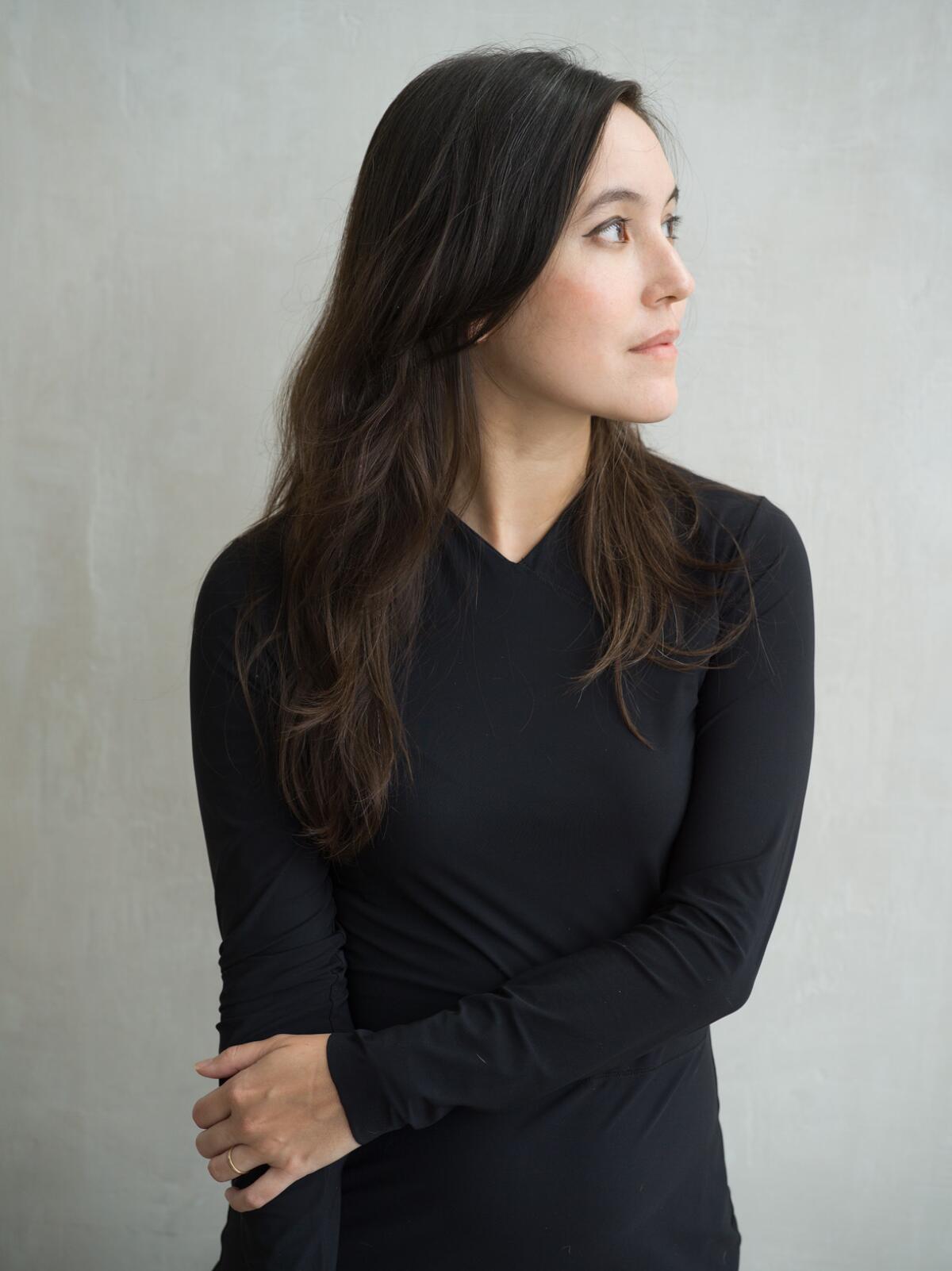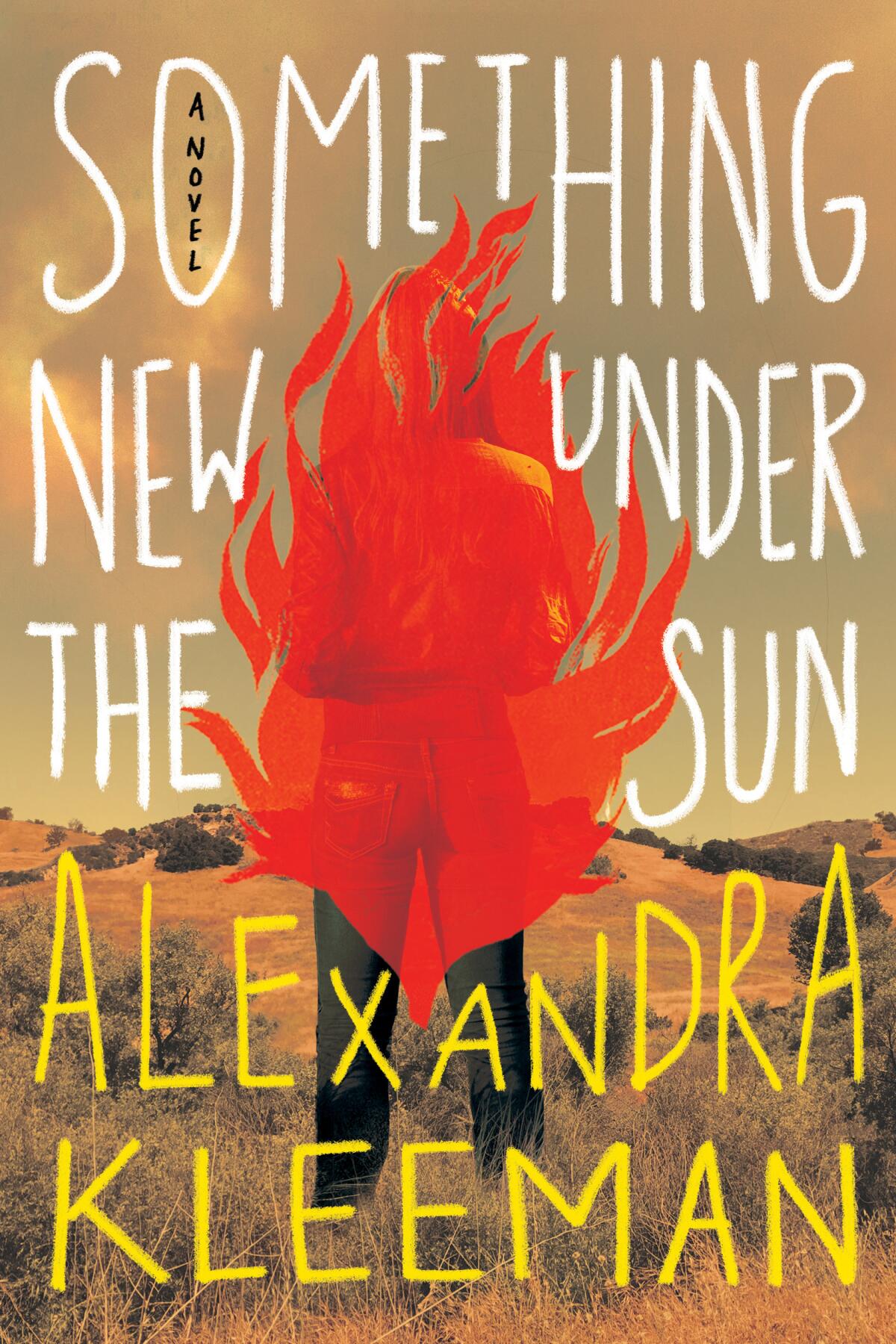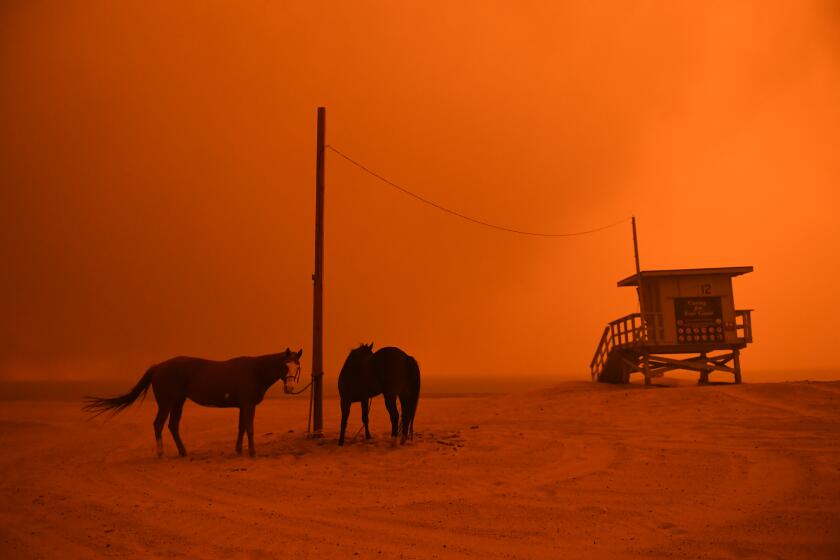Review: The most sinister power in this riotously fun dystopian novel? Still Hollywood

On the Shelf
Something New Under the Sun
By Alexandra Kleeman
Hogarth: 328 pages, $28
If you buy books linked on our site, The Times may earn a commission from Bookshop.org, whose fees support independent bookstores.
Alison takes a crowbar to her lawn; then she heads over to whack the neighborsâ grass. Her husband, Patrick, a novelist, talks sense to her, suggests pills or therapy. But given the state of the climate, is it really so unreasonable to take a crowbar to our neighborsâ lawns? After the âincident,â the coupleâs preteen daughter, Nora, begins to obsess over mushroom clouds, species extinction and other end-times phenomena. Patrick flies to L.A., ostensibly to consult on the film adaptation of his latest novel.
The brushstrokes of plot that kick off âSomething New Under the Sun,â the second novel by Alexandra Kleeman, suggest the makings of a mildly satirical novel starring yet another neurotic upper-middle-class family. But thatâs just misdirection, and Kleeman excels at it; what follows is muscular, brilliant, bonkers, an incredibly upsetting portrait of not only who we are but what we may yet become.
Whether due to vanity, bad luck or good luck masquerading as bad, Patrickâs role in L.A. is not what he thought heâd signed up for. The first inkling of something amiss is the banter of the production assistants who pick him up from the airport. Nicknamed Horseshoe and Arm, they trade off sharp one-liners and operatic paragraphs, as if Samuel Beckett spent a year commuting on the 405.
ââDo you know why we have traffic?â the Arm asks suddenly.â
ââThere are too many cars,â Horseshoe says, in a sad tone.â
A bit later Arm says, âWhen change happens, we want it to happen all at once ... . In transit, thereâs catastrophe.â
Horseshoe responds, âCatastrophe is incomplete change ... . Change is violent for those who arrive to it late.â
It turns out Patrick isnât meaningfully attached to the film at all; he is just another production assistant. In his hotel, he discovers that the pipes under the counter are gone. All the water in Southern California is actually WAT-R, a commercially produced substitute.
Changes in TV, film and book publishing, including the pandemic, have driven a boom in book adaptations. Hereâs a guide to the pipeline.
A hundred pages in, we are starting to catch on to Kleemanâs true ambitions. Patrickâs wife and daughter flee Boston for a sort of eco-cult in upstate New York. Earthbridge was founded by a man who had tried to kill himself after he saw a viral video of a polar bear being shot while scavenging in a grocery store. Alison decides sheâs happy at Earthbridge, fixating on planetary doom. âI never feel as bad as I do when I remember living in that house with you and Nora,â she imagines telling Patrick, âwatching these same things unfold, and getting ordered by you to take my handful of pills and look away.â

Meanwhile, in Hollywood, Patrick is charged with looking after Cassidy, a former child star who exerts a gravitational force on the book. âHer presence makes actors of them all,â Kleeman writes, describing Cassidyâs home as an âexpensive, lonesome space,â which âinspires as much sympathy as envy.â At her most assured, Kleeman digs deep into Cassidyâs origin story: the town west of Fresno where a famous guy asked her for directions and predicted her fame; her familyâs grim but plucky first L.A. apartment in a complex full of stage families; the demented game Cassidy played with her sister â Switch On/Switch Off â in which they toggled between emotions, over and over.
The present action is more disconcerting. The film isnât actually in production; Patrick and Cassidy begin to deduce its real purpose, which is connected to WAT-R, mass derangement, green vans and memory clinics. The themes rhyme with âChinatownâ and âSoylent Green,â but the metafictional approach recalls literary innovators such as Ben Marcus or Jesse Ball, or even Vladimir Nabokov in his mind-bending masterpiece âPale Fire.â
Lydia Millet, whose latest novel, âA Childrenâs Bible,â tackled climate change, reads new fiction on climate and argues against calling it a genre.
At times, the book can groan a bit from Kleemanâs apparent dedication to research. The reader is dragooned into learning facts about quailsâ gestational cycles; the myth of Theseusâ ship; details of Patrickâs novel that feel piped in from Google searches. A 220-page version of this novel mightâve been better.
And yet, when Kleeman is having fun, so are we. She revels in the mechanics of a film set: the craft table, the directorâs ego, the diva lead, the disgruntled writer, the shadowy financing. The specific, maddening, unfair and apocalyptic mechanics of WAT-R mustâve also been fun to construe â like the âpodsâ installed in every middle-class home, which inevitably leak, necessitating more WAT-R.
Horseshoe muses on this unsettling liquid simulacrum: âItâs the same as water, just a little bit more so.â In the words of an Orwellian scientist: âWater has been through the butts of dinosaurs and the blood of the diseased. The water you drink may have been in the mouth of your worst enemy, and you would never know. Water is secondhand, but our WAT-R has never been used.â
How is this different from other dystopian novels of late capitalism? Kleeman mixes in alluring tinctures of other genres â a sharp send-up of the Hollywood we love to hate, the inspiring transformation of Cassidy from fake hero to real. But the novelâs true genius lies in Patrickâs realizations about family, ambition and storytelling, epiphanies that arrive tragically late.
Will the ending of âSomething New Under the Sunâ crush you under the weight of its own transgressive horrors? That might depend on how you really feel about polar bears. It will certainly cause you to peek under your countertop one more time to check on your water pipes. In a keen and wonderful novel about celebrity worship, paranoia and the many ways lonely people can get it wrong, itâs the innocent Nora who might be most right. âPeople arenât the future,â she says, and after finishing this book and having a look around at the real world, itâs hard to disagree.
Emily St. John Mandel, Susan Orlean, T.C Boyle, Marlon James and others share apocalypse reading picks.
Deuel is a continuing lecturer in the writing programs at UCLA.
More to Read
Sign up for our Book Club newsletter
Get the latest news, events and more from the Los Angeles Times Book Club, and help us get L.A. reading and talking.
You may occasionally receive promotional content from the Los Angeles Times.








